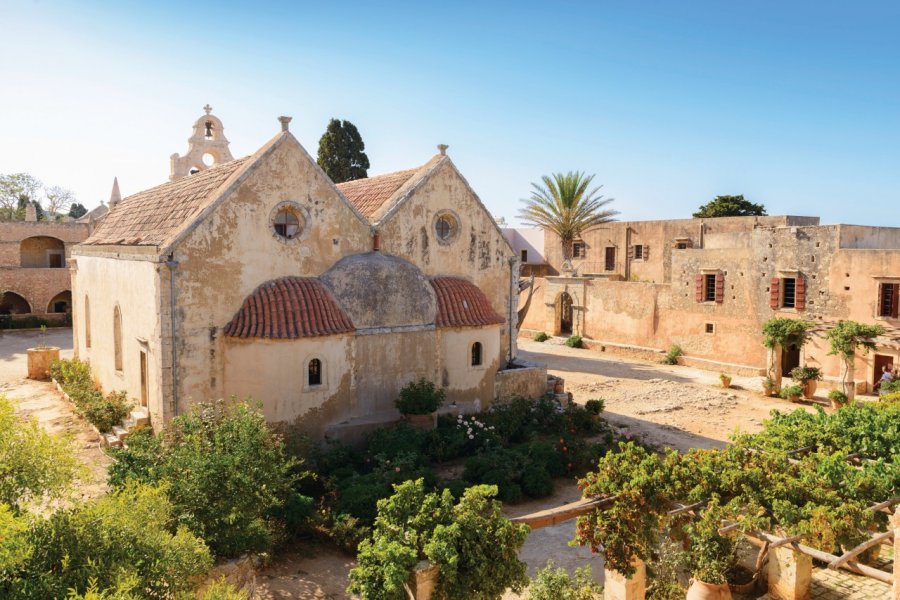Travel Guide Arkadi
Find an accommodation
Advertising
23 km south-east of Rethymnon, the Arkadi Monastery (Moni Arcadiou), built on a plateau at 500 m above sea level in the 16th century on the northern flank of Mount Psiloritis, has a symbolic value for the Cretans. There is a baroque style church and a small museum that tells the history of the site. During the Ottoman occupation, it was an important centre of resistance in supporting the Hainist rebels and consequently became one of the favourite targets of the Turkish governor Mustaffa. When 300 armed rebels (accompanied by 600 women and children) found refuge in the monastery in early November 1866, Mustaffa, after a victorious campaign in Apokronas, decided to end Arkadi. On 7 November, he laid siege to the square with 15,000 men. After an ultimatum refused by Brother Gabriel Marinakis and the rebel leader Joannis Dimakopoulos, the Turks attacked and it took them two days to enter with the help of a cannon that breached the western gate. At dusk on November 9, when Brother Gabriel had already died, the resistance fighters, in a final act of insubordination, blew up the ammunition depot. Most of the besieged and many Turks died in the explosion. Some of the rebels, including Dimakopoulos, were taken prisoner. Arkadi's sacrifice made a great impression on the world and many personalities of the time (including Victor Hugo) put pressure on politicians to support the independence of Crete.
What to visit Arkadi?
Advertising
Suggested addresses Arkadi
Weather at the moment
Advertising
Organize your trip with our partners Arkadi
Transportation
Book your plane tickets
Car Rental
Boat rental
Accommodation & stays
Find a hotel
Holiday rental
Find your campsite
Tailor-made trip
Immersion travel
Services / On site
Activities & visits
Find a doctor







